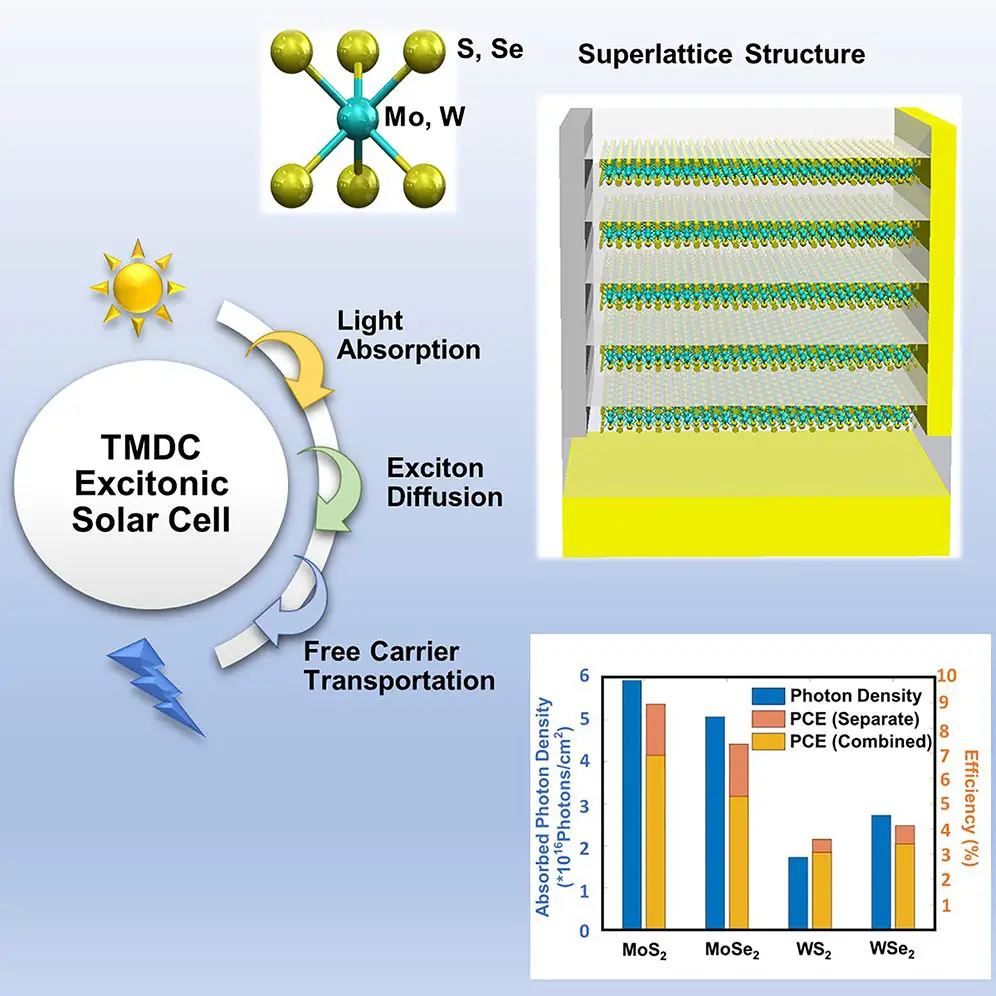Researchers at the University of Pennsylvania have proposed a novel design, utilizing superlattice structure, to potentially double the efficiency of lightweight 2D TMDC solar cells.

Lightweight solar cells are sought for space exploration and settlements due to heavy silicon or gallium arsenide cells. Molybdenum selenide-based 2D transition metal dichalcogenide (2D TMDC) solar cells are a potential solution.
Researchers at the University of Pennsylvania have proposed a novel design to enhance the efficiency of lightweight 2D TMDC solar cells, potentially doubling the current efficiency from 5% to 12%. To boost their solar absorption, space-optimized 2D TMDC cells employ a superlattice structure.
Specific power is crucial for space-based energy technologies. It enables utility-scale solar power in space, as shipping large quantities of heavy solar cells is not economically feasible. Doubling up on lighter cells provides higher specific power. The team aims to enhance the efficiency of 2D TMDC solar cells, which still need to reach their full potential. Instead of relying solely on test devices, they emphasize computational modeling for optimization. To maximize efficiency, the team recognizes the need to accurately consider excitons, a defining and complex feature of the device.
Excitons are generated upon absorption of sunlight by the solar cell, and their prominent existence is responsible for the remarkable solar absorption capability of a 2D TMDC solar cell. The solar cell generates electricity by channeling an exciton’s positively and negatively charged constituents to different electrodes. By employing this modeling approach, the research team achieved twice the efficiency of previously demonstrated experimental results. The device’s uniqueness lies in its superlattice structure, featuring alternating layers of 2D TMDC separated by a spacer or non-semiconductor layer. This layer spacing enables multiple lights bounces within the fragile cell structure. The team achieved a 12% value with such thin cells, exceeding the current efficiencies of less than 5%.
In the next 4 to 5 years, researchers aim to demonstrate cells with 10% or more efficiencies. They also plan to enable large-scale production by developing a direct growth method for superlattices, bypassing the layer-by-layer assembly of individual materials.
Reference: “How Good Can 2D Excitonic Solar Cells Be?” by Device, Hu et al., 6 June 2023, Device. DOI: 10.1016/j.device.2023.100003







